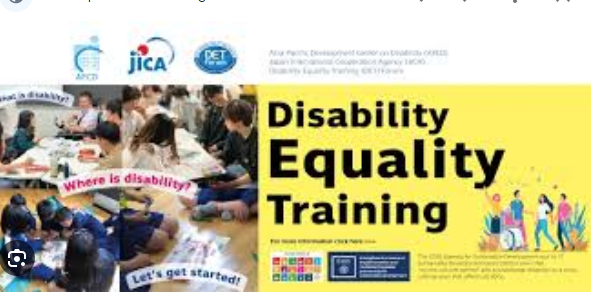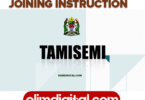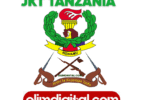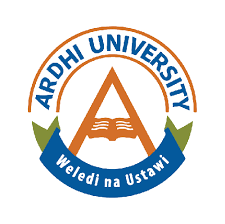Special Education Provision
Lecture 15: Notes
15.1 Introduction
Disability is part of the human condition and almost everyone will be temporarily or permanently impaired at some point of life, thus will need rehabilitation services. This lecture describes rehabilitation services by explaining the meaning of it, types and the ways these services are delivered.
| OBJECTIVES OF THE LECTURE
At the end of the lecture, student should be able to:
|
15.2 Meaning of rehabilitation
Rehabilitation of individuals with special needs is defined as a set of measures that assist individuals who experience or likely to experience disability, to achieve and maintain optimum functioning in interacting with their environment (WHO, 2011).
Rehabilitation is also instrumental in enabling people with limitations in functioning to remain in or return to their home community, live independently, and participate in education, the labour market and civic life.
However, rehabilitation is not only concerned with physical or useful restoration/ compensation of individual’s disability by injury or disease.
It is concerned with the total quality of life in terms of wellness, happiness and approval in satisfying the demands and needs of human being in orientation, freedom of movement, autonomy, expression of self, association and ability to ensure autonomous in economic existence. According to Winnick, (1979) children who are born with disabilities need stimulation for development and adaptation-habilitation and those who acquire disabilities need rehabilitation.
Therefore, rehabilitation is an imaginative practice that includes the collaboration efforts of various medical specialists, and links in other health, technical and environmental fields, to improve the physical, mental, social and vocational abilities of persons with disabilities (Olaogun, 2007).
In the other word, rehabilitation should again provide individual with disabilities with tools they need to attain autonomy. the broad outcome such as prevention of the loss of function, slowing the rate of the loss of function, improvement of the function, compensation for the lost function and maintenance of the existing function.
Besides, rehabilitation should be voluntary, since some individuals may require support with decision – making about rehabilitation choices. In all cases rehabilitation should help empower a person with disability and his family.
15.3 History and Development of Rehabilitation Services
The history and development of rehabilitation services for person with disabilities can be traced back in 1945 or the end of World War II. At that time many countries had large number of servicemen who had sustained different forms of disability. Since then the number of individuals with disabilities increased worldwide.
Therefore a new field i.e. rehabilitation rapidly developed the decades after the World War II and become the subject of extensive international research, development of technical assistance by government and international non-government organizations.
In 1951, the United Nations organization (UNO) established the rehabilitation unit, with the aim of facilitating the transfer of the new medical and technical advanced to developing countries.
The main features of the international support were preparation of rehabilitation support for the construction of large urban-based rehabilitation centres. By the end of 1960s the approach had resulted in minimal rehabilitation service delivery in the capital cities, not reaching vast numbers of persons with disabilities living in rural areas.
In 1978 the World Health Organization (WHO) adopted the Alma Alta Declaration, shifting support from city based hospitals and institutions to the community, therefore, the development of the community-based rehabilitation (CBR) services.
However, some countries are so far to embrace the guideline for WHO- CBR since the rehabilitation services are either institution-based within the cities or suburban communities or form part of active outreach services to rural communities supported by international agencies (Tinney,etal., 2007)
.The effects of civil wars, political upheavals and rivalry and poverty have also increased the incidence of disabilities in developing countries, hence the need of rehabilitation of persons with disabilities in their community as a means of overcoming the limitations imposed by disability.
Additionally, in some developing countries, disability is associated with punishment for wrong doing, witchcraft, the wrath of gods or the ancestors anger, hence participation limitations.
Generally, traditional institutional rehabilitation services such as medical and vocational rehabilitation centres, residential homes, special schools with therapy and nursing care, sheltered workshops and day centres have formed the backbone of the rehabilitation services in the developed countries. However, these services were maintained to opposing degrees by financial and material benefits, counseling services and other support services in the community.
For example, people with disabilities living at home and for their families and friends living or working with them access to support services may vary very much. According to Thomas, (1982) many people, particularly those severely mentally retarded remained in a long term residential care despite mounting evidence of inadequacies of many such institutions.
In developing countries, rehabilitation has in general developed under colonial regimes to serve mainly the colonial elite. It consisted mainly of contemporary urban institutions replicated on those of the West.
The rest of population has generally had little access to rehabilitation services of any kind, though missionaries and other concerned individuals have managed to provide services little by little in poor basis.
Rehabilitation services developed in this way is incapable to do more than provide a necessary care service with small valuable psychological, social, educational or vocational rehabilitation since they lack experienced and skilled human resources, facilities, equipment and money. Consequently, they can reach only a small proportion of the population in need.
Most of the governments in these countries also face the same problem of scarce resources, though they provide integrated services and economic support to rehabilitation institutions in the private sector, they cannot manage to pay for or finance rehabilitation institutions for all the persons with disabilities in need of rehabilitation services or long term care.
15.4 Types of rehabilitation services
A number of approaches to rehabilitation of persons with disabilities are being advocated both in services and practice. The two broad approaches to rehabilitation are community based Rehabilitation (CBR) and Institutional Based Rehabilitation (IBR).
15. 4.1 Community Based Rehabilitation
The characteristic features of CBR are that the needs of persons with disabilities are to be met at their own environment, involving family members and community. In other words, it refers to the measures that are taken at community level to use and build on locally available resources of the community.
These resources include people with disabilities, their families and other community members. The idea of Community Rehabilitation services have been promoted by World Health Organization, UNICEF, the ILO and other international organizations and gained increasing acceptance by most governments and NGOs in many developing countries.
The WHO (1980) suggest that the rehabilitation institutions should be used for complex medical services or more complicated aids and appliances, coordination and planning and base for mobile units such as eye units and other possible functioning.
It should be the last stage in referral chain and the first stage for referral after acute and severe injury. The aim of rehabilitation institutions should be short term intensive care rather than long term and their specialist services should be actually accessible to those most in need of them.
Children with disabilities can attend normal schools in the community if they can get access to them. For those with special learning needs for example sensorially or mentally impaired special classes may be needed in some subjects but integration in others may be possible.
Teachers in ordinary class need to be given additional training to cope with needs of children with disabilities, special schools teachers can visit ordinary schools; simple aids can be developed to overcome a variety of problems.
Community based rehabilitation can likely cover the entire range of rehabilitation services with greater success than the separation strategy of institution care. The advantages of community based rehabilitation approach are:
- It is much cheaper than institutional care, and therefore has the possibility to reach all persons with disabilities;
- It avoids displacement of people from their communities and the risks of institutionalization, psychological disfigurement and the creation of dependence;
- It trains people to cope directly with the environment, in which they will live, using resources that are largely existing locally;
- It improves discovery and referral, greatly diminished problems of transport and access, allows easy supervision and follow up, and sustained support for the entire family;
- It can ensure that persons with disabilities learn useful skills that are directly related to their environment, thus helped their self- sufficiency and their capacity to contribute directly to their own society;
- It promotes community and rural development by creating jobs, for example rehabilitation workers can be drawn from the local community, many simple aids and appliances can be produced locally using local materials and skills and persons with disabilities can be trained to work for the rehabilitation of others;
- Keeping persons with disabilities in their community improves family and community understanding and acceptance of persons with disabilities, understanding causes and treatment of impairments.
- This will help in improvement of prevention of impairment, early detection and treatment of disabling conditions and minimize isolation and social handicapping of impaired individuals;
- It leaves rehabilitation institutions free to concentrate on acute and severe disability or special needs requiring highly technical intervention.
Generally, a well established community rehabilitation strategy can have major benefits for people with disabilities, for their families and for their community. The government will benefit from this approach by providing the possibility of effective rehabilitation for all without the crippling expenditure of institutional care.
According to rehabilitation International and a United nations Expert Group (1981), well established community based rehabilitation is far more cost-effective than the alternative of having more persons with disabilities not rehabilitated.
15.4.2 Institutional-Based Rehabilitation (IBR)
This is the rehabilitation of persons with disabilities at or through institutions, frequently away from their homes.IBR leads to a transformation in social behaviour of persons with disabilities, making the process of their social integrations difficult.
The advantage of IBR is that the quality of rehabilitation services provided through IBR tends to be better than through CBR, as services are provided by professionals and specialists with the assistance of more sophisticated equipment and tools.
15.5 Provision of Rehabilitation Services
Rehabilitation is always voluntary, and some individuals may require support with decision-making about rehabilitation choices. In all cases rehabilitation should help empower a person with a disability and his or her family.
Rehabilitation is cross-sectoral and may be carried out by health professionals in conjunction with specialists in education, employment, social welfare and other fields. In resource poor contexts it may involve non-specialists workers – for example, community-based rehabilitation workers in addition to family, friends and community groups.
Furthermore, rehabilitation can be provided in a range of settings including acute care hospitals, specialized rehabilitation wards, hospitals or centres, nursing homes, respite care centres, institutions, hospices, prisons,
residential educational institutions, military residential settings, or single multi professional practices. Longer-term rehabilitation may be provided within community settings and facilities such as primary health care centres, rehabilitation centres, schools, work places or homes. Rehabilitation services have to include:
- Early detection, diagnosis and intervention,
- Medical care and treatment,
- Social, psychotically and other types of counseling and assistance,
- Training in self care activities including mobility, communication, and daily living skills, special provisions as needed,
- Provision of technical and mobility aids and other devices,
- Specialized educational services,
- Vocational rehabilitation services for example vocational guidance, vocational training.
| SUMMARY
This chapter explained the meaning of rehabilitation of individuals with special needs . It also discussed that rehabilitation services for persons of disabilities started its way back after the WW II whereby many victims of war needed rehabilitation services. The lecture also discussed about the two common rehabilitation approaches as community based and institutional rehabilitation approaches. The advantages of community based rehabilitation services seemed to overpower the institutional based rehabilitation service although the later is carried out by professionals and specialized equipment and tools.Again it was discussed that rehabilitation is always voluntary, since individuals need support in deciding about rehabilitation choices. All in all rehabilitation ought to help a person with a disability and his or her family. |
Last modified: Saturday, 5 November 2016, 1:03 PM







